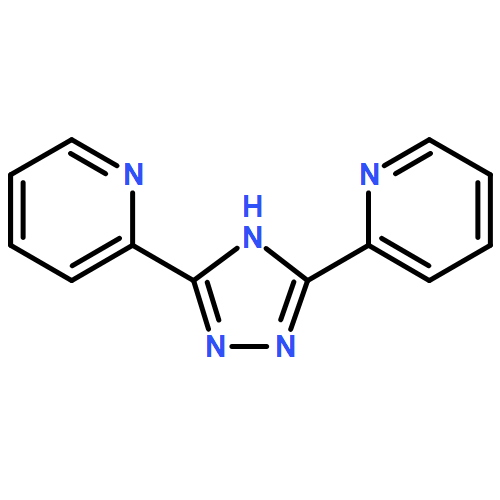Co-reporter: Peng-Hu Guo;Jun-Liang Liu;Dr. Jian-Hua Jia;Dr. Jing Wang;Fu-Sheng Guo;Yan-Cong Chen;Wei-Quan Lin;Ji-Dong Leng;Dr. Ding-Hua Bao;Dr. Xu-Dong Zhang;Dr. Jun-Hua Luo;Dr. Ming-Liang Tong
pp: 8769-8773
Publication Date(Web):
DOI: 10.1002/chem.201300299
Co-reporter: Peng-Hu Guo; Jiang Liu; Zi-Hao Wu; Hua Yan; Yan-Cong Chen; Jian-Hua Jia;Ming-Liang Tong
pp: 8087-8092
Publication Date(Web):August 6, 2015
DOI: 10.1021/acs.inorgchem.5b01322
Thanks to the MeCN hydrolysis in situ reaction, a [2 × 2] square grid DyIII4 cluster based on a polypyridyl triazolate ligand, [Dy4(OH)2(bpt)4(NO3)4(OAc)2] (1), was separated successfully and characterized through single-crystal X-ray diffraction and SQUID magnetometry. The frequency-dependent signals in the out-of-phase component of the susceptibility associated with slow relaxation of the magnetization confirmed that complex 1 displays single-molecule magnet (SMM) behavior. Two distinct slow magnetic relaxation processes, with effective energy barriers Ueff1 = 93 cm–1 for fast relaxation and Ueff2 = 143 cm–1 for slow relaxation observed under a zero direct-current field, are mainly attributed to the origin of single-ion behavior, which can be further acknowledged by the magnetic investigation of a dysprosium-doped yttrium cluster. Besides, it should be noted that complex 1 represents so far the highest energy barrier among the pure DyIII4 SMMs.
Co-reporter: Peng-Hu Guo, Jun-Liang Liu, Ze-Min Zhang, Liviu Ungur, Liviu F. Chibotaru, Ji-Dong Leng, Fu-Sheng Guo, and Ming-Liang Tong
pp: 1233-1235
Publication Date(Web):January 12, 2012
DOI: 10.1021/ic202650f
A toroidal magnetic moment in the absence of a conventional total magnetic moment was first observed in a novel tetranuclear dysprosium cluster with nonmagnetic ground state. The toroidal state is quite robust with respect to variations of the exchange parameters.
Co-reporter: Jiang Liu, Yan-Cong Chen, Zhong-Xia Jiang, Jun-Liang Liu, Jian-Hua Jia, Long-Fei Wang, Quan-Wen Li and Ming-Liang Tong
pp: 8150-8155
Publication Date(Web):25 Mar 2015
DOI: 10.1039/C5DT00880H
The perturbation to the ligand field around the lanthanide ion may significantly contribute to the magnetic dynamics of single molecule magnets. This can be demonstrated by two typical Dy4 cluster-based single molecular magnets (SMMs), [Dy4X2(μ3-OH)2(μ-OH)2(2,2-bpt)4(H2O)4]X2·2H2O·4EtOH (X = Cl and Br for 1 and 2, respectively), which were constructed by using 3,5-bis(pyridin-2-yl)-1,2,4-triazole (2,2-bptH) as the polynuclear-chelating ligand. Alternating-current (ac) magnetic susceptibility measurements show that the energy barriers in complexes 1 and 2 were immensely enhanced by comparing with our previous work due to the optimization of the ligand field around DyIII ions. Remarkably, their high thermal active barriers at 190 K (1) and 197 K (2) under a zero applied external dc magnetic field are also among the highest within the reported tetranuclear lanthanide-based SMMs.
Co-reporter: Jiang Liu, Yan-Cong Chen, Zhong-Xia Jiang, Jun-Liang Liu, Jian-Hua Jia, Long-Fei Wang, Quan-Wen Li and Ming-Liang Tong
pp: NaN8155-8155
Publication Date(Web):2015/03/25
DOI: 10.1039/C5DT00880H
The perturbation to the ligand field around the lanthanide ion may significantly contribute to the magnetic dynamics of single molecule magnets. This can be demonstrated by two typical Dy4 cluster-based single molecular magnets (SMMs), [Dy4X2(μ3-OH)2(μ-OH)2(2,2-bpt)4(H2O)4]X2·2H2O·4EtOH (X = Cl and Br for 1 and 2, respectively), which were constructed by using 3,5-bis(pyridin-2-yl)-1,2,4-triazole (2,2-bptH) as the polynuclear-chelating ligand. Alternating-current (ac) magnetic susceptibility measurements show that the energy barriers in complexes 1 and 2 were immensely enhanced by comparing with our previous work due to the optimization of the ligand field around DyIII ions. Remarkably, their high thermal active barriers at 190 K (1) and 197 K (2) under a zero applied external dc magnetic field are also among the highest within the reported tetranuclear lanthanide-based SMMs.


